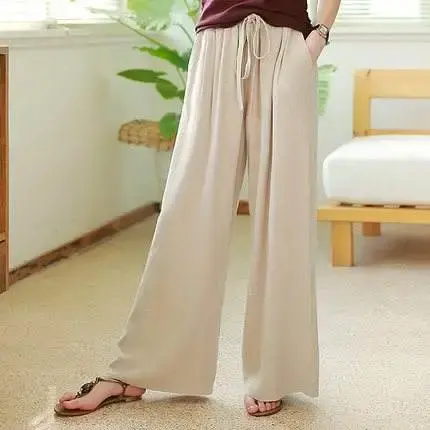Characteristics of polyester
As we all know, polyester fabric has the characteristics of high strength, good elasticity, excellent heat resistance, heat insulation, wear resistance and corrosion resistance. Moreover, polyester dries easily without deformation after washing, and has good washability and wearability.
But at the same time, polyester fabrics have poor dyeability and hygroscopicity, and are easily charged with static electricity. , contaminated with dust, affecting the appearance and comfort.
There are many types of polyester fiber fabrics on the market. In addition to pure polyester products, there are also Many products blended or interwoven with various textile fibers make up for the shortcomings of pure polyester fabrics and provide better wear performance. Polyester fabrics are developing in the direction of natural synthetic fibers such as wool-like, silk-like, linen-like, and suede-like.
Today I will introduce to you the advantages of several polyester blended products :
Advantages of polyester-cotton blends
Comparison of polyester-cotton blended fabrics and pure cotton fabrics The effect is as follows:
Polyester-cotton blended fabrics are generally divided into Two types:
Polyester-cotton (TC) fabric: refers to polyester content accounting for more than 50% and cotton content less than 50%.
Advantages: The luster is brighter than pure cotton, it feels smooth and crisp, and it is not easy to wrinkle. The higher the polyester content, the less likely it is to wrinkle the fabric. Wrinkled.
Cotton-polyester (CVC) fabric: refers to a cotton content of more than 50% and a polyester content of less than 50%.
Advantages: The luster is slightly brighter than pure cotton cloth, the cloth surface is smooth, clean and free of yarn or impurities. It feels smooth and crisp, and is more wrinkle-resistant than pure cotton.
The common disadvantages of this type of blended fabrics are that they are not as skin-friendly as cotton and are not as comfortable to wear as cotton fabrics.
Advantages of polyester and linen blends
In the past, linen textiles had high yarn density and could only be woven into medium and low-end products. They were only suitable for outerwear, decorative fabrics, etc., and could not reflect the unique advantages of linen textiles such as good moisture absorption, good moisture release, and coolness. Nowadays, polyester fiber and flax fiber are blended to produce a series of high-end linen blended products suitable for summer inner and outer clothing. What are the characteristics of polyester and linen blended fabrics?
01.Cool to the touch
The flax fiber blending ratio is 35%-40%, and the fiber surface coverage is high. After contact with human skin, the heat on the surface of the human body will be quickly dissipated, making people feel cool.
02.The fabric is light and thin, and the dyeing is bright
The yarn is relatively Fine, generally below 20tex (more than 50 tex), it can be used alone or interwoven with pure or blended yarns of other textile fibers to form ultra-thin fabrics. The dyeing and printing of the products are bright, beautiful and gorgeous.
03.Good wrinkle resistance
Due to fiber characteristics, The advantages of polyester’s good wrinkle resistance can be used to improve the shortcomings of linen fiber fabrics that are easy to wrinkle and are not brightly dyed.
04.Comfortable to wear and good washability
Use The advantages of flax fiber’s good moisture absorption and moisture permeability improve the disadvantages of polyester fabric’s poor moisture absorption and uncomfortable wearing.

Advantages of polyester-wool blending
The ratio of wool:polyester=45:55 can maintain wool The advantages of polyester fiber can also bring into play the advantages of polyester. Almost all coarse and worsted wool fabrics have corresponding wool-polyester blended varieties. Among them, worsted wool-polyester thin tweed, also known as cool tweed, is commonly known as Mao Qianliang (Note: Qianliang is the common name for polyester). It is one of the fabrics that best reflects the characteristics of wool-polyester blends.
Compared with all-wool tweed, wool-polyester thin tweed has a light texture, good wrinkle recovery, strong wear resistance, easy to wash and quick-dry, long-lasting pleats, stable size, and not easy to be eaten by insects, but its feel is not as good as that of full-wool tweed. The hair is soft. If glossy polyester is used as the raw material for blending, the surface will have a silky luster. If cashmere or camel hair and other animal hairs are used in the blended raw material, the hand feel will be smoother.
The advantages of TR fabrics
Polyester-viscose blend is a highly complementary blend. Polyester and viscose are not only available in cotton and wool types, but also in mid-length types. Wool type fabric is commonly known as “fast bus”. When polyester is not less than 50%, this blended fabric can maintain the characteristics of polyester, such as firmness, wrinkle resistance, dimensional stability, and strong washability and wearability. The mixing of viscose fiber improves the air permeability of the fabric and improves the resistance to melt holes; it also reduces the pilling and antistatic phenomena of the fabric.
The polyester/viscose blended fabric ratio is mostly 65/35 or 67/33. The characteristics of this type of blended fabric are smooth and clean fabrics, bright colors, strong wool texture, good elasticity and good hygroscopicity; but The ironing resistance is poor.







